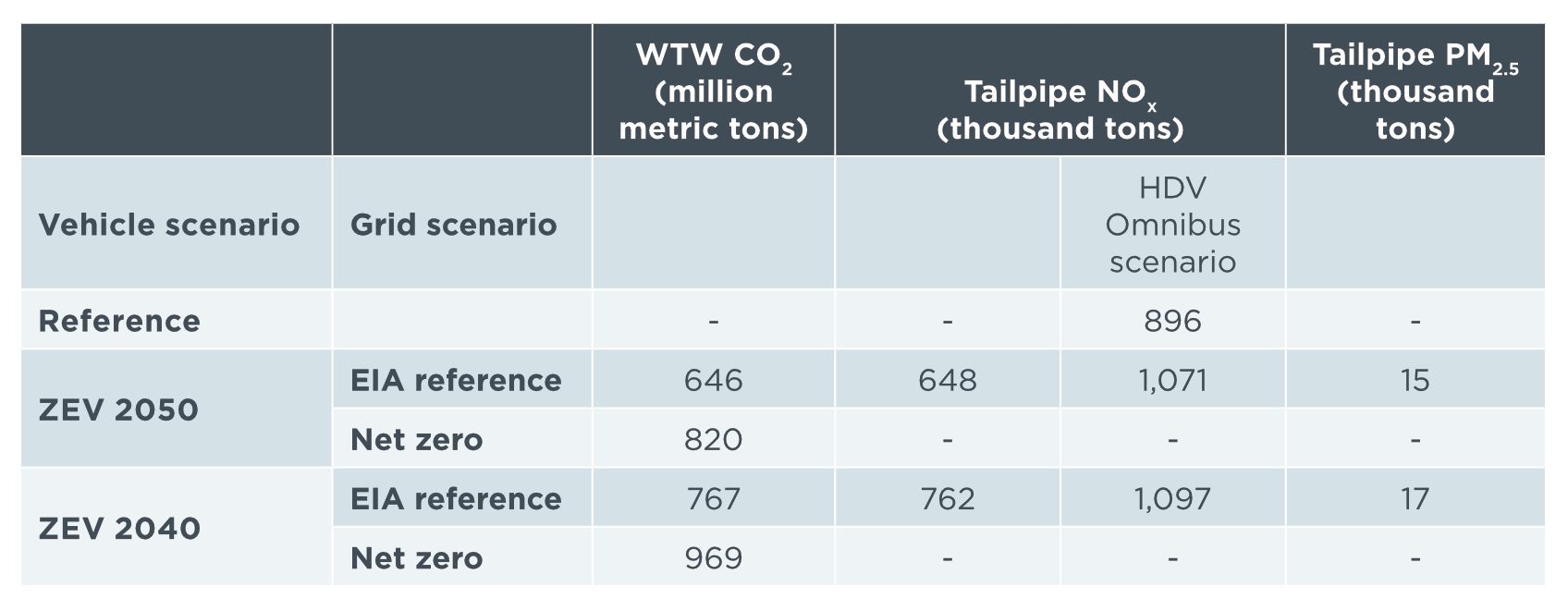Briefing
Benefits of the 2020 Multi-State Medium- and Heavy-Duty Zero-Emission Vehicle Memorandum of Understanding
This paper estimates the multiple benefits of achieving the zero-emission medium- and heavy-duty sales targets of the Multi-state Memorandum of Understanding in select states. Without new policies, this study finds that the baseline reduction in well-to-wheel CO2 emissions of the medium- and heavy-duty fleet across 14 states and the District of Columbia are on a path to decline 8% below 2020 levels by 2030 and 23% below 2020 levels by 2050. NOx emissions are projected to decline through the late 2030s as the oldest generation of ICE vehicles are replaced with newer vehicles manufactured to comply with U.S. 2010 and Tier 3 emission standards.
Adoption of the California Advanced Clean Trucks rule in these states, which sets minimum ZEV sales requirements on manufacturers of Class 2b-8 vehicles, would lead to 36% of all new M/HD vehicles powered by zero-emission engines in 2030. In that year, 12% of vehicle miles traveled would be zero-emission, and well-to-wheel CO2 emissions would decline to 12% below 2020 levels. Achieving the 100% zero-emission medium- and heavy-duty sales goal by 2050 would deliver well-to-wheel CO2 emissions that are 38% below 2020 levels by 2040. Emissions would further decline to levels 66% below 2020 levels by 2050 and avoiding a cumulative 646 million metric tons of CO2 emissions from 2020-2050.
The study also evaluates a faster pace of electrification where 100% zero-emission medium- and heavy-duty sales occur by 2040. Achieving such a goal would reduce well-to-wheel CO2 emissions to levels 43% below 2020 levels in 2040 and 72% in 2050, cumulatively avoiding more than 120 million metric tons of additional CO2 from 2020 to 2050.
The 2050 target would cumulatively avoid 15 thousand tons of tailpipe PM2.5 through 2050, while faster uptake of 100% ZEV sales by 2040 would deliver 17 thousand avoided tons. In addition, MOU signatories can expect their medium- and heavy-duty ZEV goals to reduce fleet-wide NOx emissions 14%–16% in 2035, compared to no new action. The adoption of the Heavy-Duty Omnibus rule in combination with these policies would result in 25%–31% lower emissions by 2035, approximately doubling the benefits of fleet electrification.

Table 1. Cumulative emissions reductions in MOU jurisdictions, not including California, compared to the Reference scenario, 2020–2050.
